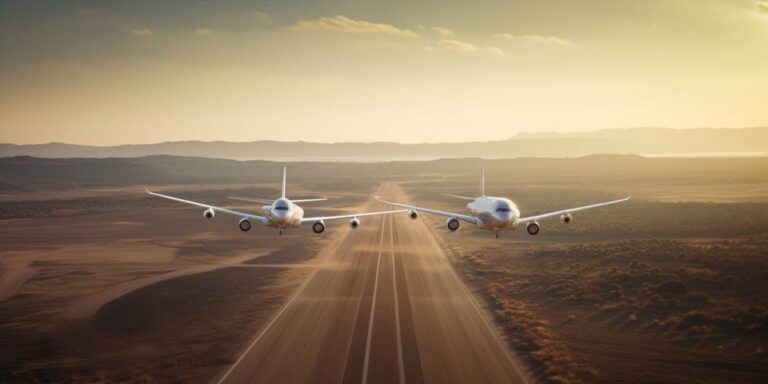The Airbus A380, often dubbed as the “king of the skies,” is the largest passenger aircraft in operation. Its sheer size and capacity make it a symbol of luxury and opulence. With a spacious double-deck layout, the A380 can accommodate a staggering number of passengers, providing an unparalleled experience in terms of comfort and space.
On the other hand, the Boeing 787, known as the “Dreamliner,” takes a different approach by prioritizing fuel efficiency and advanced technology. The use of composite materials in its construction significantly reduces weight, leading to lower fuel consumption and operating costs. Airlines appreciate the economic benefits that the 787 brings to their fleets.
While the A380 impresses with its size, the 787 focuses on innovation and sustainability. The Dreamliner’s fuel-efficient engines contribute to a smaller environmental footprint, aligning with the growing demand for greener aviation solutions.
Passenger experience is a crucial aspect of the A380 vs. 787 debate. The A380, with its spacious cabins, allows airlines to create luxurious and comfortable interiors. On the contrary, the 787 provides a more personalized experience with features like larger windows that allow natural light to fill the cabin, enhancing the overall journey for passengers.
When it comes to long-haul flights, both aircraft offer unique advantages. The A380’s capacity makes it ideal for high-demand routes between major hubs, ensuring that airlines can cater to a large number of passengers efficiently. The 787, with its fuel efficiency, opens up possibilities for direct flights on less-traveled routes, connecting smaller cities across the globe.
Operational flexibility is another key consideration. The A380 requires airports with specialized infrastructure due to its size, limiting the number of airports it can operate from. In contrast, the 787’s smaller size enables it to access a wider range of airports, including those with shorter runways.
In the end, the choice between the Airbus A380 and Boeing 787 depends on the specific needs and strategies of airlines. The A380 excels in providing a luxurious experience on high-demand routes, while the 787 offers a more versatile and economically efficient solution for airlines seeking flexibility and sustainability.
Modern design of airbus a380 and boeing 787 aircraft
The Airbus A380 and Boeing 787 represent the epitome of modern aircraft design, each pushing the boundaries of innovation in their own distinct ways. Let’s delve into the key features that set these giants of the sky apart.
The Airbus A380, often hailed as the queen of the skies, is the world’s largest passenger aircraft. Its design emphasizes capacity and comfort, with a two-deck configuration that can accommodate up to 853 passengers in a typical three-class seating arrangement. The unmistakable double-deck layout not only offers increased passenger capacity but also provides airlines with the flexibility to create luxurious and spacious cabin interiors.
One of the standout features of the A380 is its impressive wing design. The aircraft boasts a high aspect ratio wing that enhances aerodynamic efficiency, contributing to reduced fuel consumption. The wingtip fences further improve fuel efficiency by minimizing drag. These design elements make the A380 a fuel-efficient giant, aligning with the industry’s growing focus on sustainability.
Turning our attention to the Boeing 787 Dreamliner, it takes a different approach to design, prioritizing fuel efficiency and passenger experience. The composite materials used extensively in the construction of the Dreamliner contribute to its lightweight structure, enabling impressive fuel savings. The aircraft’s innovative noise-reducing chevrons on the engine nacelles enhance its environmental credentials, making it a favorite among environmentally conscious airlines.
Inside the Boeing 787, the emphasis is on passenger comfort and well-being. The large windows, with electronic dimming features, create a spacious and airy feel in the cabin. The higher cabin humidity levels and lower cabin altitude contribute to reduced passenger fatigue, ensuring a more pleasant flying experience.
Comparing the two giants, the Airbus A380 leans towards sheer size and capacity, while the Boeing 787 focuses on efficiency and passenger-centric design. Airlines make choices based on their specific needs, whether it be catering to large passenger volumes or prioritizing fuel efficiency for long-haul routes.
Size and capacity of airbus a380 compared to boeing 787
When it comes to long-distance transoceanic travel, two prominent aircraft in the aviation industry stand out for their distinct characteristics – the Airbus A380 and the Boeing 787. These giants of the sky cater to different needs, offering varying capacities for passengers, cargo, and luggage.
The Airbus A380, often referred to as the “superjumbo,” holds the title of being the largest passenger aircraft globally, boasting an impressive capacity that can accommodate over 800 passengers in a typical two-class configuration. Its sheer size allows airlines to offer a luxurious and spacious flying experience for those embarking on extended journeys. Additionally, the A380 provides ample room for cargo, making it a preferred choice for carriers looking to transport significant loads across the skies.
On the other hand, the Boeing 787, also known as the Dreamliner, takes a different approach. While not as massive as the A380, the 787 focuses on efficiency and advanced technology. Its long-distance capabilities are exceptional, enabling airlines to connect distant destinations with fuel efficiency. The Dreamliner typically accommodates around 240 to 290 passengers, offering a more intimate and comfortable setting for those on board.
When it comes to the realm of luggage, both aircraft provide sufficient space for passengers to stow their belongings. However, the A380’s larger size allows for more extensive storage options, ensuring that travelers can bring along their necessities for long-distance journeys without compromising on comfort. The 787, while not as cavernous as its counterpart, still provides adequate space for luggage, prioritizing the convenience of its passengers.
For cargo enthusiasts and logistics managers, the choice between the A380 and the 787 depends on the nature of the shipments. The A380’s expansive cargo hold is ideal for transporting large and bulky items, making it a preferred option for industries requiring substantial cargo capacity. Conversely, the 787’s efficiency and versatility make it suitable for transporting a variety of cargo loads, especially in situations where reaching distant destinations is crucial.
Fuel consumption and performance of airbus a380 and boeing 787
The Airbus A380 and Boeing 787 stand as titans in the aviation industry, each boasting impressive fuel consumption and performance characteristics. Let’s delve into the intricacies of their engines, economy, emissions, and combustion processes to uncover the nuances that define their efficiency.
Starting with the heart of these giants, their engines play a pivotal role in dictating their overall performance. The A380 features the Rolls-Royce Trent 900 and Engine Alliance GP7200 engines, while the 787 opts for the Rolls-Royce Trent 1000 and General Electric GEnx-1B. The combustion efficiency of these powerhouses significantly influences their fuel consumption and, subsequently, operational costs.
When it comes to fuel consumption, the A380, with its larger size and capacity, unsurprisingly consumes more fuel per flight than the more modest 787. However, the A380 compensates for this with a superior economy of scale, accommodating more passengers and spreading the environmental impact across a larger number of travelers. On the other hand, the 787’s advanced aerodynamics and lighter structure contribute to its commendable economy in fuel usage.
Examining emissions, both aircraft have made strides in adopting environmentally friendly technologies. The A380 incorporates advanced materials and design features to reduce its carbon footprint, while the 787 takes it a step further with the use of lightweight composite materials that enhance fuel efficiency and minimize overall emissions. These initiatives align with the aviation industry’s increasing focus on sustainability.
Now, let’s shed light on the combustion processes within their engines. The A380’s engines utilize a combination of advanced combustion technology and innovative materials to optimize fuel utilization. Similarly, the 787 employs cutting-edge combustion techniques, ensuring a balanced mix of power and efficiency, ultimately contributing to its remarkable performance.
See also:
- Embraer 170 versus boeing 737 – which passenger plane is better?
- Boeing 737 800 vs. airbus a321 – which passenger plane is better?
- Airbus a350 vs boeing 777 – a comparison of the two most modern passenger aircraft
- How long are airplanes: airplane dimensions
- Fuel efficiency revolution: what is the most fuel-efficient commercial aircraft





